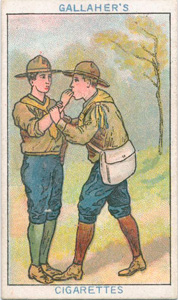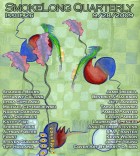Lydia—I’m amazed (again!) by the spell Arrows puts on me. How do you get to these details that become so real? Are these “found memories” so to speak?
I took the details in this particular piece directly from my childhood. One of the prompt words I was using that day jogged the memory of snooping around an old shed on a farm my family used to rent when I was a kid. I remembered finding a can of WD40—it was probably 10 years old but still sprayed. My brother and I (and maybe one of our friends from school I can’t remember exactly) sprayed it all over the walls. I spent a lot of time playing in the buildings on that land and found all sorts of things that had belonged to the previous owner: old horsehoes and farm equipment, a butter churn, a water pump, a giant clam shell filled with aquarium rocks. Once I’d latched onto the WD40 detail, I decided to stay in that memory and one detail lead to another until I had a story. We only lived on that property for about six years, but I find memories of that place turning up in my stories all the time.
“I love him, but one day he will punch me in the stomach and that will be it.” Okay, here you are BREAKING A RULE OF WRITING FICTION—TELLING!!!! But man, does it work. What are the essential rules to know for short/flash fiction? In writing this piece, what rules were you most conscious of following and/or breaking?
When writing flash fiction I’m really only ever concerned with two things—the rhythm and poetry of the piece and some sort of tension or conflict. I worry sometimes about a piece being more of a description than a story; so I guess that’s a rule I’m conscious of. A writer has a lot of leeway with flash fiction however, and can get away with so much more. Sometimes I do think about showing and not telling when I write but mostly with longer pieces.
Details like the father’s snare drum, the smoke rings—where do you draw from? Can you talk about your process?
Specific details like these usually come from my own memories (or something I’ve overheard, “found memories” as you said). I always end up taking bits and pieces of my childhood or my present life and putting them into a different context. The details of this piece came that way. My father is a drummer and one of my prompt words was “snare.” Naturally I thought of a snare drum. Since I was already in the memory of the farm we lived on, I just kept going with it and tried to remember other things from that time, like my mother always baking and cooking in between her classes and her secretary job and the record player always going. This was also around the time my father began smoking a pipe and would sit at the dining room table blowing smoke rings. All those things ended up in this story, and that’s usually my process I like to blend actual, real memories with made up things.
How do you approach the blank page? When you set out to write, do you know beforehand what form your work will take?
Most of the time I have no idea what I’m going to write about when I sit down to work. I’ve never been one to outline or plan, but occasionally I’ve found myself on the train on the way to work and thought “I’m going to write about such and such today” and then on my lunch break I do just that. However, the majority of the time I sit down to the computer with about five or so prompt words and just see what happens. I usually know the form will be a flash story simply because I only have time to write on my lunch breaks—just an hour a day—and I’ve gotten in the habit of writing complete little stories during that time, rather than working on the same longer form day after day (although that is a goal too).
What are you reading currently? What authors do you recommend to people who are writing flash, or beginning to experiment with the form?
I just finished up Mary Robison’s One D.O.A., One on the Way, which was brilliant, and I’m getting ready to read Marilyne Robinson’s Housekeeping. Before that I was on a Barry Hannah kick.
For someone who is just beginning to experiment with flash I’d recommend Sudden Fiction compilation edited by Robert Shapard They’re a great introduction to the form. When I was first getting into flash fiction I poured over that book. I also read lots of Russell Edson poems which seemed to me like perfect little flash stories.



 The core workshop of SmokeLong Fitness is all in writing, so you can take part from anywhere at anytime. We are excited about creating a supportive, consistent and structured environment for flash writers to work on their craft in a community. We are thrilled and proud to say that our workshop participants have won, placed, or been listed in every major flash competition. Community works.
The core workshop of SmokeLong Fitness is all in writing, so you can take part from anywhere at anytime. We are excited about creating a supportive, consistent and structured environment for flash writers to work on their craft in a community. We are thrilled and proud to say that our workshop participants have won, placed, or been listed in every major flash competition. Community works.